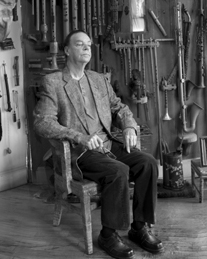Tom O'Horgan
| Tom O'Horgan | |
|---|---|
 |
|
| Born |
May 3, 1924 Chicago, Illinois, USA |
| Died | January 11, 2009 (aged 84) Venice, Florida, USA |
| Occupation | Theatre director, composer, actor |
| Years active | 1960s-1990s |
Tom O'Horgan (May 3, 1924 – January 11, 2009) was an American theatre and film director, composer, actor and musician. He is best known for his Broadway work as director of the hit musicals Hair and Jesus Christ Superstar. During his career he sought to achieve a form of "total theater" described by the New York Times as "wittily physical," and which earned him a reputation as the "Busby Berkeley of the acid set."
Born in Chicago, Illinois, O'Horgan was introduced to theater by his father, a newspaper owner and sometimes actor, who took him to shows and built him footlights and a wind machine. As a child he sang in churches and wrote operas, including one entitled Doom of the Earth at age 12.
O'Horgan received his degree from DePaul University where he learned to play dozens of musical instruments. After graduating he worked in Chicago as a harpist and also performed with the Second City, the Chicago improvisational theater company. He moved to New York City and began acting downtown at places like Judson Memorial Church. During this time he developed a night club act where he performed improvisational humor as he accompanied himself on the harp.
O'Horgan thought of his work as "kinetic sculpture" and said that his goal was to be "able to blend all aspects of the theatre without letting any part become secondary to the others." Of contemporary commercial theater, he believed that people are "hung up on chandeliers because they insist that the one-dimensional, verbal Ibsenite theater is the only theater. But this is an aberration of the 19th century. If the ideas are the primary thing, it's not theater. Theater has always meant music, dance, art. That's what the Greek theater was." Shortly after Hair opened on Broadway, Eleanore Lester wrote in The New York Times: {{O'Horgan, a veteran of many years of experimentation and frustration in his search for The Way in theater, successfully incorporates a number of strands coming on strong in the rapidly evolving post-Miller-Williams-Albee and post-absurdist theater. Those trends, growing partly out of the intimate Off Off Broadway movement and partly out of the visceral political drama of be-ins, sit-ins and demonstrations, include the use of improvisational techniques, vigorous ensemble playing, a more physical style of acting, greater use of dance, music, and puppets, and Pop-camp comedy - plus the Total Theater concept in which the audience becomes more closely involved in the work.}}
...
Wikipedia
